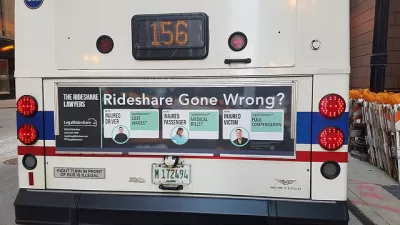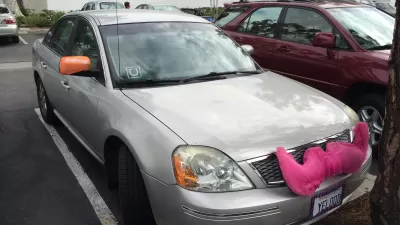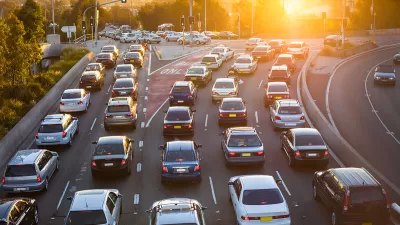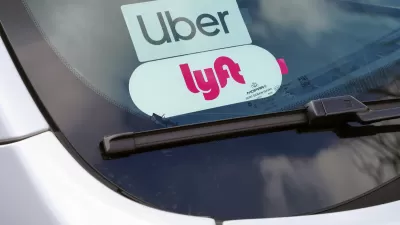Past studies have shown how ride hailing services have added to congestion. A new study by Bruce Schaller suggests that even ride shares add to traffic, because they pull riders off of more efficient transit options like public transit.

Studies have shown ride hailing services add to traffic, but a new data from transport consultant Bruce Schaller goes further showing that even shared rides are adding to traffic. "Pooled ride services have lured a different market that directly competes with subway and bus systems, while failing to achieve significantly better efficiency than their solo alternatives. The result: more driving overall," Faiz Siddiqui reports for The Washington Post.
Ride share companies have long argued that they're getting cars off the roads, because their customers forgo their cars and take the occasional Lyft or Uber instead, but research has shown that isn't the case. In fact, Uber drivers end up spending more time on the road than private car owners, because they spend time driving between rides or cruising, waiting for a ride to appear. "Deadheading" between rides accounts for about half of the miles driven in these services.
Analysts believe ride share miles will continue to increase. "Ride sharing has added 5.7 billion vehicle miles to nine major urban areas over six years, the report says, and the trend is “likely to intensify” as the popularity of the services surges," Siddiqui writes.
FULL STORY: A new study says services like UberPool are making traffic worse

Planetizen Federal Action Tracker
A weekly monitor of how Trump’s orders and actions are impacting planners and planning in America.

Congressman Proposes Bill to Rename DC Metro “Trump Train”
The Make Autorail Great Again Act would withhold federal funding to the system until the Washington Metropolitan Area Transit Authority (WMATA), rebrands as the Washington Metropolitan Authority for Greater Access (WMAGA).

The Simple Legislative Tool Transforming Vacant Downtowns
In California, Michigan and Georgia, an easy win is bringing dollars — and delight — back to city centers.

The Small South Asian Republic Going all in on EVs
Thanks to one simple policy change less than five years ago, 65% of new cars in this Himalayan country are now electric.

DC Backpedals on Bike Lane Protection, Swaps Barriers for Paint
Citing aesthetic concerns, the city is removing the concrete barriers and flexposts that once separated Arizona Avenue cyclists from motor vehicles.

In These Cities, Most New Housing is Under 441 Square Feet
With loosened restrictions on “micro-housing,” tiny units now make up as much as 66% of newly constructed housing.
Urban Design for Planners 1: Software Tools
This six-course series explores essential urban design concepts using open source software and equips planners with the tools they need to participate fully in the urban design process.
Planning for Universal Design
Learn the tools for implementing Universal Design in planning regulations.
Smith Gee Studio
City of Charlotte
City of Camden Redevelopment Agency
City of Astoria
Transportation Research & Education Center (TREC) at Portland State University
US High Speed Rail Association
City of Camden Redevelopment Agency
Municipality of Princeton (NJ)





























